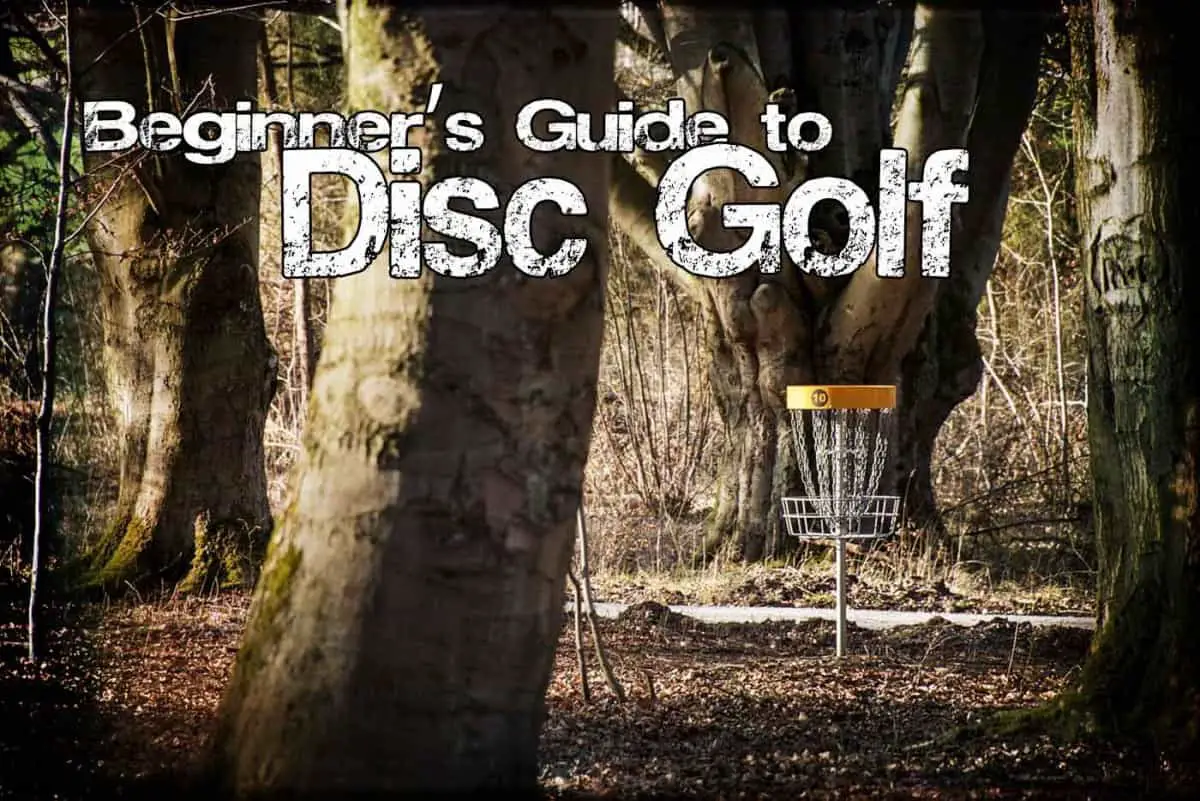Beginners Guide to Disc Golf
In order to start playing disc golf you are first going to need to find yourself a good set of disc golf discs and then you are going to have to learn the various rules of the game.
Disc golf is much more fun when you play with other people.
If it is your first time playing it is a good idea to get some practice in before you go out on the course, since an experienced player can throw a disc quite accurately and for a very long distance.
While you want to be as good as you can be, you’ll learn quickly that your attitude and frame of mind is more important than your skill level in this social sport.
In order to help you learn the game we have come up with a beginners guide to disc golf, here are the things that you need to know:
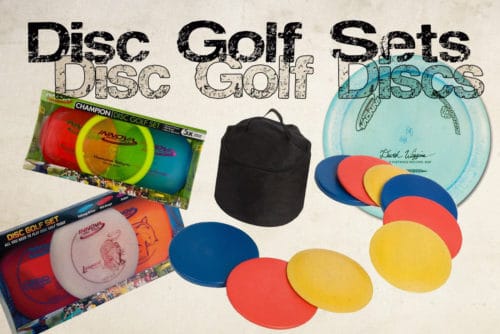
Okay, first things first! ATTITUDE!
It’s been my experience, and that of many others who play the game, that there are more than a few players who have a tendency to either lose their cool or exhibit some form of anti-social behavior that puts them on the very bottom of any invitation list to join a team or a tournament.
Trust me, YOU don’t want to be that “guy”.
Here’s a brief outline of how you should present yourself while playing the game. If you do, you’ll fit right in and everyone’s enjoyment level will soar!! Doesn’t that sound nice?
You Should:
- At least look like you’re actually having fun no matter how sucky your gameplay is on that day or how much you wish you were not there (because you know you’ll finish last). Others will sense your great attitude, especially in light of the fact that (they all know) you’re doing poorly. It takes a big heart and soul to have a really good attitude in the light of a bad afternoon of golf.
- Watch other players closely (with interest, not seething anger) and legitimately go out of your way to really try to find a lost disc. This will not go unnoticed by those around you!
- Be kind to other groups of players outside your own circle by giving them the right of way (especially even if they don’t deserve it) and try to be still while in the line of sight of other players.
- Be ready to throw at all times rather than thinking and strategizing only when your turn to shoot arrives. It’s best to strategize as much as possible while others are throwing so you’ll be ready to go when your turn comes.
You Should NOT:
- Expect everyone to help you find your lost discs. They probably will (if your group is made up of normal, good people) but the less you expect help, the more people will want to help you and the less you’ll be disappointed if they don’t!
- Throw your disc out of turn whether on purpose or “by accident”.
- Focus more on your game than on etiquette and attitude. The players you’re competing with care more about the “you should” list above than they do your score, so focus on what’s important in life (relationships) and not always on winning at all costs and getting angry when you fall short of perceived expectations.
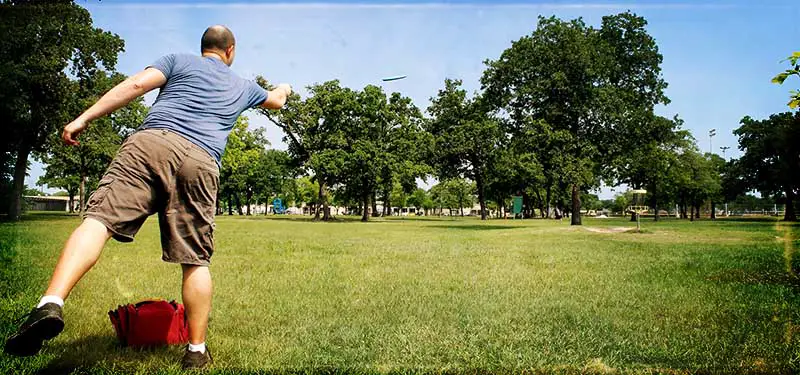
Discs:
The first thing that you need to know about disc golf is that each of the discs is actually marked according to how well they can be thrown.
Depending on the disc and the extent that it was tested, you will find three different numbers that are generally located directly on the face of a disc.
The numbers each have their own meaning and they are generally either a number from 1-10 or a number from 0-100.
In order, the numbers represent the speed at which the disc is capable of flying, the amount that the disc is capable of gliding as well as the amount of turn/ fade that you should expect to have when you throw the disc.
Over time it is likely that you will develop your own personal opinions on what numbers you want your discs to be, but generally speaking, you will notice that a disc is more expensive as the numbers go up.
You MUST know that there are different discs as you would have different clubs in traditional golf. Since there are no clubs in disc golf, the discs themselves are different for different purposes.
There are Drivers and Putters (I know you’ve heard those terms before).
There is a LOT to dig into regarding the qualities of various discs and how they differ by company, etc. but this is just a quick primer for beginners, so we’ll leave the deep stuff for now.
Instead, we’ll focus on what you need as a beginner!
What you need:
In order to play the game of disc golf the first thing that you are going to want to have is a set of discs. Generally speaking, each player will have at least three discs with which they’ll play a course.
The first disc is a driver disc and it is used off of the tee off in order to get as close as possible to the green as it is capable of flying for the longest distance. The best disc for a beginner would be a “slow driver”.
Drivers have sharper edges to cut through the air more efficiently.
The next disc that you are going to want to have is a medium-range disc also occasionally known as an iron. This disc is capable of traveling a fair distance, but is generally more accurate and can’t go as far as a driver disc.
The last disc that is used by the majority of players is a putter disc. This disc is normally quite large in size meaning that it is not capable of going near the same distance as that of a medium-range disc or a driver disc.
This disc is meant to be used over short ranges and should be the most accurate disc within a set of discs.
They have blunt, thick edges because they are made so they don’t fly too far, but they are very accurate!
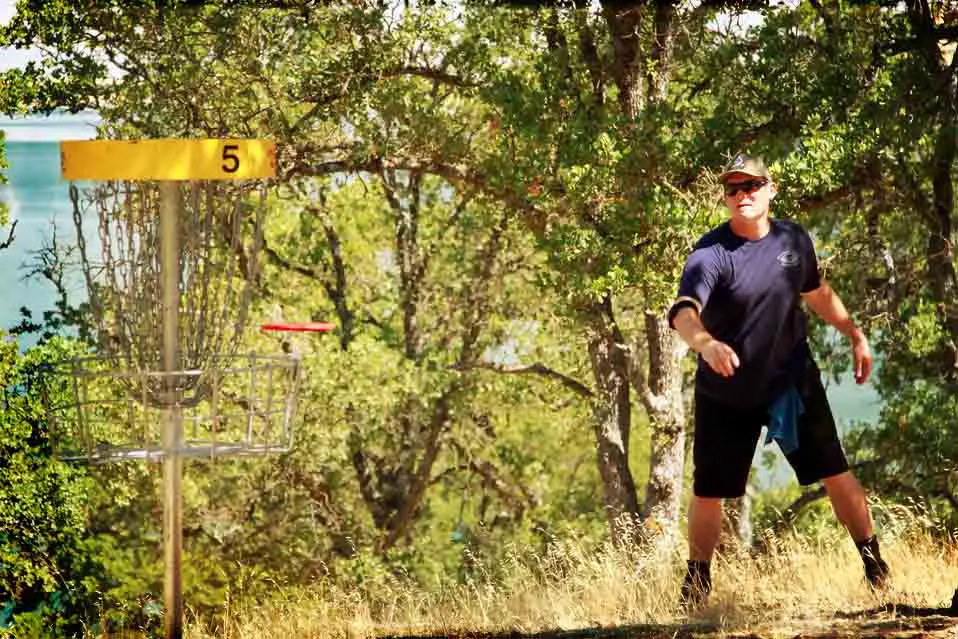
Beginner Disc Weights:
Without getting too complicated (remember I said I wouldn’t dive too deep), I do have to tell you what disc weights are best for beginners.
The weight rating is usually found on the back of the disc and the lighter the disc, the better it is for novice players. Those weights should hover in the 150g to 160g range.
HUGE DISC TIP: Always write your name, phone number/email address on each of your discs. Most decent players will return your disc if they find it.
If you want to be a “superhero” of the disc golf community, you could return the putters and drivers with such identification if you find them while snorkeling for treasure in water hazards I mention a bit later!
SLIGHTLY SMALLER DISC TIP: Some beginners ask if they can use “regular” frisbees to play the game, and of course the answer is YES and NO! Clear as mud!
Yes, you can use whatever disc you want if you’re just practicing and shooting the breeze at the park with a friend or going solo.
But no, you cannot use a regular frisbee in any tournament or competition.
However, if your goal is to actually improve your disc golf game in order to compete (even casually) with a team/club or group of friends, we would STRONGLY advise investing in at least a starter set of discs to give you the feel of actual gameplay.
It’s like someone asking, “can I play ice hockey with a ball?”.
Of course, but not in real ice hockey competitions, and you certainly won’t get a feel for the sport if you never play with an actual hockey puck!
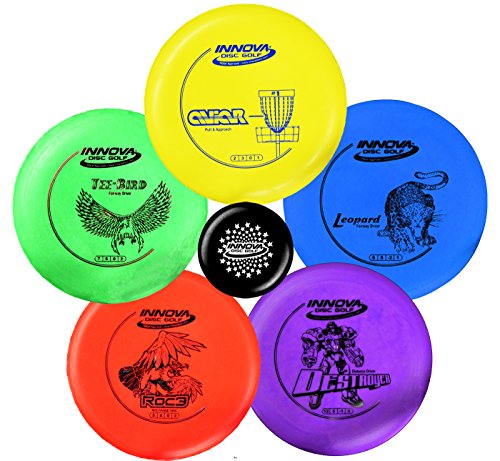
How to Play:
Luckily scoring in disc golf is quite the same as regular golf and all of the same main rules still apply, though rules may differ vary a bit in specific games of disc golf and according to a specific tournament rule.
Be sure to confirm all rules before competing in any competition.
When someone else is shooting you aren’t allowed to distract them from their shot and each player shoots separately according to how far of a distance away from the pin they are.
The player with the fewest strokes at the end of the course wins the game. A stroke is given for every shot that is taken and when a penalty is enforced.
The foot that you put all of your weight on when you throw must be kept no more than one foot behind the marker disc which is set down in front of and touching the disc you threw; you must also not place your foot in front of the marker disc.
When you are following through on your throw you are allowed to step over the marker disc except when you are putting which can be anywhere within ten metres of the hole.
The other rule that you should keep in mind is that if you land your disc in the water or a tree you must add a stroke to your score.
More on Rules and Terminology
Tee Throw
The term “tee throw” refers to how each hole begins. There are typically designated tee throw areas and the rules are very specific about how you must remain and conduct yourself (foot placement, etc.) within those designated areas.
Order of Throwing
Typically, when a game starts, the player with the least number of strokes on the previous hole gets to start the next hole. However, after everyone has teed off, the thrower whose disc is farthest from the hole (ie. the “worst” shot) gets to throw first.
A Lie
I know this one sounds like a mis-truth, but a “lie” refers to the spot where a player throw has landed. Each lie is marked with a small marker disc on the ground (not unlike traditional golf).
The next throw that player makes is made very close to (but behind) the lie.
Fairway Throw
A fairway throw is similar to a drive in traditional golf. It’s the “long shot”. A Fairway throw needs to be made from directly behind the lie. A run-up and follow-through (after the release) is usually allowed unless the lie is within 10 meters (32.8 feet) of the target.
Any shot within 10 meters of the target requires that the player maintain balance and not move past the lie until the disc comes to rest.

A Mandatory
Yes, this is just like it sounds – you have to do this or you get the boot! A mandatory is also known as a “mando”.
It refers to any number of specific, designated obstacles (typically a tree or pole) in the fairway that has to be navigated or passed on the designated side which is usually marked with an arrow.
If you should be so unfortunate to have your disc pass on the wrong side of the mando, you’ll have to correct your shot be back-tracking, or in some cases there will be a specific zone or area you may start your next shot from, but you’ll have to take a one-shot penalty.
Completion of the Hole
Here’s where you’d like to end up as soon as possible! It’s pretty basic. A golf disc that comes to rest either in the golf basket or suspended in chains attached to the basket, indicates successful completion of that hole.
Out of Bounds
Another good way to increase the number of shots you take on each hole is to chuck your disc OB (out of bounds). So yes, there are boundary lines in most play areas that you must remain within.
If you throw your disc OB, then you can grab your errant disc and throw it again from an area no more than 1 meter (3-ish feet) inside the boundary near to where your disc went OB.
However, as you might expect, a penalty shot will be added to your score.
In most competitions, park boundaries are nearly always out of bounds as are public roads and water hazards.
QUICK TIP: If you’re a cheapo like me, you can sometimes score a sack full of discs by snorkeling or scuba diving in a permanent water hazard (not unlike traditional golf).
But, make sure it’s legal and ethical to do so in that particular body of water.
Best Practices
Like in any activity or sport, there are some basic rules of decorum and etiquette. Here’s a very basic (and kind of “common-sense-ish”) list of best practices:
1 – Be nice on the course and don’t let resting trash lie. Pick it up and tote it outta there.
2 – Be still and quiet while opponents are shooting. It really looks bad on you if you appear to distract an opponent. Can you say “bad sportsmanship”?
3 – Be sure to stand BEHIND the player who is shooting rather than beside or (do I have to say this?) in FRONT of them. Well, I guess you really can’t stand in front of them, but you get the point right?
4 – Grab your disc from the basket once you’re done. Don’t leave it there to show the world how great you are for actually completing the hole!
5 – Get brownie points with the universe by helping newbies with the rules and skill development.
6 – If it’s possible, let the faster groups (if there are any) move through and then ahead of your group.
7 – Don’t be a knob and mess with any course obstacles or features. This should go without saying, but it’s been done, so I thought I’d mention it here.
8 – If you notice your driver disc is flying at a fairly high velocity towards someone else, it bodes well for you to at least try to warn them with a sharp yell to get their attention. If you’re really unlucky, they may look your way just in time to get a mouth full of sharp, plastic driver, but we hope the actual odds of that are low.
Before you leave, you’ll want to check out our top beginner’s golf disc options for this season! Just click right HERE! (please?)
Throwing Tips:
When you are getting ready to throw a disc, distance isn’t always the most important factor to consider.
What you really want to do is make it as easy as possible to be able to get the disc in the hole or as close to the hole as possible on your next shot.
This means that you should always be on the lookout for trees and other potential hazards that are on the course so that you don’t end up landing in one and losing strokes on your score for no reason.
Another thing you are going to want to do before each and every shot is read the wind.
If it is really windy you are going to want to adjust your shot according to the wind because wind can have a huge impact on where your shot lands especially when you are doing a long-distance throw.
It may take some practice to get used to throwing the discs in windy conditions but in time you will learn how far over you have to throw your disc in order for it to land relatively straight out in front of you.

Course:
Depending on the location that you play your disc golf you could be playing on anything from a flat surface to a very hilly area.
It is always important to think about the location that your disc is going to land so that you can adjust your throw in order to avoid hazards as best as possible.
However, you’ll also want to think about the landing location so that you can take advantage of high points in the course and decide on how much spin and roll you want to incorporate into your throw in order to change the distance and the location of your landing.
Especially when you are putting you are going to want to look at the hole and see how high you want to throw the disc, how far you want to throw the disc as well as if there are any areas on the green that you should attempt to stay away from as it may ruin your next putt.
Competition:
One thing that is very important if you want to improve your gameplay is to pay attention to your competitor’s shots, especially if they are shooting before you.
Not only can this help to show you more accurately what the wind conditions are like but it will also help to show you potentially what kind of weight and distance you should aim for when you take your shot.
Especially if you are brand new to the game of disc golf and you are playing with someone who has a lot more experience than you, it is not a bad idea to ask them to give you some advice and to ask them to point out any potential flaws that they see in your throwing techniques.
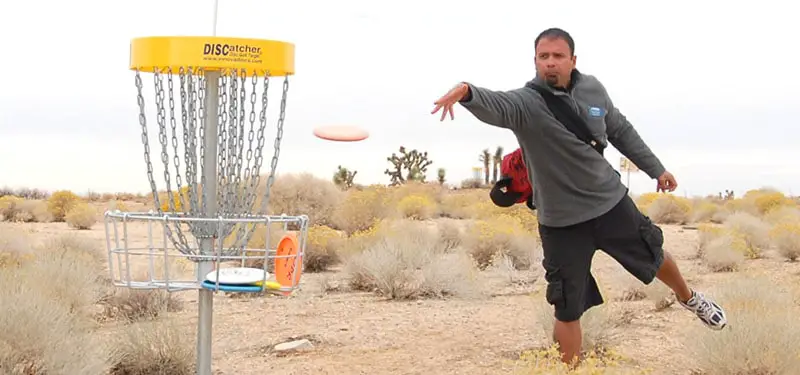
Disc Throwing Concepts and Advice:
Tip 1 – Throw “fast” not “hard”. Most novice players will “wind up” on the fairway try to throw “hard”.
That usually means tensing up your muscles like you’re ready to be hit be a car (morbid analogy I know), but what you want to do is remain very relaxed until about 1/10 of a second before your release.
Tensed muscles don’t move fast, and slow muscles make slow shots. Aiming is difficult with tense muscles so let’s just trash the whole “tense muscle” think okay?
Tip 2 – Don’t “white knuckle” the disc! Many novices tend to grab the disc a bit too tightly and that makes it difficult to release with any accuracy.
Obviously, you don’t want the disc to fly out of your hands before the right time or fall out of your grip so keep a “tight” grip, but not nearly tight enough to make white knuckles.
Tip 3 – Running to gain speed to power your shot is a bunch of bunk! Most of your power in any shot will come through proper timing of your torso’s pivot and muscle engagement timing.
It has (almost) nothing to do with forward momentum as gained by running. The speed of your torso’s turn and your arm swing (followed by wrist snap) will determine the speed (and maybe the distance) of your throw much more than a run-up.
Tip 4 – WRONG DISC! A very common mistake according to pros, is that beginners often use discs that are much to fast and unstable.
The name of the game for starters is to use lighter, slower and more stable discs. Obviously, as you progress, you can add more discs to your arsenal and start using faster ones as you gain experience and confidence.
Tip 5 – Use this rule of thumb; When starting out using actual disc golf discs, you should practice/perfect using putters, followed by midranges and finally perfect your technique with drivers.
While most won’t do this, nearly every experienced player will tell you they wish they had!
Super-Secret Advanced Tip – When you buy discs, try to buy 5 or 6 of the same exact disc (weight and construction) because during practice, it’s REALLY helpful to throw 6 discs in sequence to learn how to quickly correct the mistake you made in the last throw. This is the best and fastest way to up your game! You’re welcome!
Other Sources of Learning:
If you have a hard time learning games by watching other people in real life, another option for you is to watch some disc golf videos.
There are many instructional guides that you can find on the internet made from all kinds of different people.
It may be a good idea to watch a few different guides so that you can be sure the information is accurate, but this is a pretty easy and quick way to learn some new techniques.
Another thing that you can do is read through the rules of disc golf as well as read up on an instructional guide.
Just reading the rules of the game can give you a better grasp of the types of things that you will need to do during the game and it will also allow you to compete against more experienced people without them constantly on your back about not following the rules.
Hopefully, after reading this article you now have a better idea as to the rules and regulations of disc golf, as well as hopefully you now realize some of the techniques that you can use in order to help improve your gameplay.
Remember that practice is important and the more you practice your disc golf throwing, the more you are going to get used to throwing each individual disc.
You will begin realizing how far each of them goes depending on how hard you throw them as well as learning how to do an effective throwing technique for each situation that you get put in. Best of luck with your disc golfing games!
A Beginner’s Primer for Throwing a Golf Disc
One Last Thing – Kind of Interesting! I Knew Him Before He Was Famous!
I spent many of my formative years in a city near Niagara Falls, Ontario called St. Catharines, Ontario.
It was a blue-collar GM factory town on the south shore of Lake Ontario and you could get a VERY clear view (and often a great photograph) of the Toronto skyline on the opposite shore.
I grew up in the north end of town near the lake, and coincidentally, my next-door neighbor (and subsequently best friend for decades) was a young boy named MARK DAKIV.
I remember back in 1980 when I was 12 years old, Mark (1 year older than I) was unnaturally obsessed with this new sport called “frisbee golf”.
He made his own courses in the small backyard available to all us suburban-dwellers in our compact homes. Well, who knew that 15 years later, he would join the ranks of the disc golf pros and now ranks among the world’s best. Here’s his info!
See our top recommendations for the best starter discs you can buy online!

